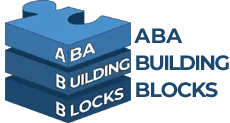Is navigating your practice’s financial cycles like trying to solve a complex puzzle? You’re not alone. The dynamic and intricate process of managing the financial aspects from a patient’s first appointment right through to final payment approval can seem daunting. This process, known as ‘revenue cycle management’ or RCM, is fundamental in bolstering your practice’s financial health and ensuring quality care for your patients.
At ABA Building Blocks, we understand the unique challenges that come hand in hand with effective RCM—identifying the proper payers and codes, mitigating claim rejections and ensuring timely patient payment collections can be akin to walking a tightrope. By breaking down these complexities, we aim to simplify the maze of revenue cycle management in this comprehensive guide.
To start off, here’s a glimpse at the core elements of the revenue cycle management process:
- Appointment scheduling and patient registration
- Verifying insurance eligibility
- Capture of medical service charges and coding
- Claims submission to insurance companies
- Payment reconciliation and collection
Expect these stages to form the main sections in the guide that follows, packed with actionable solutions tailored to your specific needs.

From making the most of your practice’s performance metrics to leveraging technology, this guide provides you the insights you need to make revenue cycle management a smooth, efficient process that supports the financial health and sustainability of your practice.
Ready to make the revenue cycle management process less of a puzzle and more of a strategic, streamlined process? Let’s dive in.
Conclusion: The Future of Revenue Cycle Management and Its Impact on Healthcare Industry
As we navigate the future of healthcare, it’s clear that revenue cycle management (RCM) will continue to evolve alongside industry changes and emerging technologies. At ABA Building Blocks, we recognize the growing importance of effective RCM and are committed to staying ahead of these changes to ensure the financial wellbeing of our organization.
One significant transformation affecting RCM is the shift towards value-based care and reimbursement. As the Affordable Care Act and the Medicare Access and CHIP Reauthorization Act of 2015 (MACRA) have shown, new regulations can add complexity to the billing and collections process. The transition from fee-for-service to value-based reimbursement will incentivize positive and socially significant outcomes. As a result, healthcare providers will need to focus on delivering high-quality patient care that results in positive outcomes to receive proper reimbursements.
Additionally, technology and automation will continue to play a central role in streamlining RCM processes. Health IT systems, artificial intelligence (AI), and data analytics provide invaluable tools to handle the complexities of RCM, from coding and charge capture to claims submission and payment collection.
At ABA Building Blocks, we’re already leveraging AI and data analytics to optimize our RCM. These technologies not only increase our efficiency but also ensure proper reimbursement for our services, thus improving our financial health.
Finally, healthcare providers will need to remain vigilant about regulatory compliance, as changes in legislation can significantly impact RCM. Here, too, technology can aid in staying compliant and managing the complexities of the ever-evolving healthcare landscape.
In summary, RCM is more than just a financial process; it’s a critical component that bridges clinical care and administrative tasks. As we continue to embrace the future of healthcare, we at ABA Building Blocks will persist in our commitment to provide the highest quality of care while ensuring the sustainability of our practice.
For additional information on how we can support your practice’s RCM needs, explore our business services or check out our informative blog for more insights on healthcare industry trends.
Understanding the Importance of Revenue Cycle Management in Healthcare
In the healthcare field, maintaining financial stability is not just a business necessity—it’s a critical factor that enables us to deliver the best quality care to our patients. That’s where Revenue Cycle Management (RCM) comes into play.
The Role of RCM in Ensuring Financial Viability
Our expert at ABA Building Blocks, Kim Finger, Ph.D., describes RCM as a financially-driven process that ensures healthcare providers receive appropriate compensation for the services they deliver in a timely and efficient manner. Simply put, RCM is the lifeblood of a healthcare practice’s financial health. It involves identifying, collecting, and managing revenue from payers based on the services provided .

Without an effective RCM process, healthcare providers may face delayed or reduced payments, leading to financial instability. For us at ABA Building Blocks, it’s a crucial backbone of our organization, ensuring financial health while allowing us to continue providing the best-quality care to our patients.
How Mismanagement of RCM Can Impact Healthcare Organizations
On the flip side, the mismanagement of RCM can have serious repercussions. The complexity of healthcare RCM, coupled with industry-specific challenges such as changing reimbursement models and cumbersome billing processes, can lead to unnecessary denials and debts. This can impact not just our financial stability, but also patient satisfaction and our organization’s reputation.
To navigate these complexities, many healthcare providers are turning to different solutions, including software and outsourcing. These methods, each with its potential benefits and drawbacks, tie back to organizational needs and goals. At ABA Building Blocks, we’re committed to exploring the most effective methods for managing our revenue cycle, ensuring our financial sustainability while continuing to deliver the highest standard of care.
In the following sections, we’ll delve deeper into the various stages of the RCM process, the challenges it presents, and how technology can aid in streamlining and optimizing this essential aspect of healthcare administration. We’ll also look at the future of healthcare RCM and its role in transitioning to value-based reimbursement.
So, why is RCM important? Simply put, it’s the key to ensuring our practice remains financially viable so we can focus on our primary goal: delivering the best possible care to our patients.
The Role of Technology in Streamlining Revenue Cycle Management
The healthcare industry, like many others, is becoming more reliant on technology to increase efficiency and effectiveness. This is particularly true for revenue cycle management. New technologies such as Health IT systems, artificial intelligence (AI), and robotic process automation (RPA) are reshaping the way we manage revenue cycles, making them more streamlined and less prone to errors.
Health IT Systems and Automation
Health IT systems, including Electronic Health Record (EHR) systems, are essential tools in refining revenue cycle strategies. These systems automate common issues in revenue cycle management, such as payer-provider communications, recommending appropriate ICD-10 codes, and monitoring medical billing processes. They can even assist in administrative tasks like scheduling patient appointments.
Automation is especially useful in today’s remote work environment, allowing providers to manage claims, collect payments, and address claim denials efficiently from anywhere. It reduces administrative work, freeing up healthcare providers to focus more on patient care.
At ABA Building Blocks, we leverage technology to ensure a steady stream of revenue. Our ABA therapy billing software helps streamline the process, reduce errors, and improve overall efficiency.
Artificial Intelligence in Revenue Cycle Management
Artificial intelligence is another technology changing the face of revenue cycle management. AI can monitor large amounts of data and point providers to certain indications, such as why a claim was denied. This can drastically improve the process of denial management and reduce the denial rate.
AI can also assist with matching patients with the right provider, estimating out-of-pocket costs, and coding claims. By evaluating the variables associated with these tasks, AI improves the success rate of getting to the right outcome.
Furthermore, AI and automation have the potential to help providers with prior authorization requirements, another common challenge in revenue cycle management.
Robotic Process Automation and Cognitive Computing
Robotic Process Automation (RPA) and cognitive computing are technologies that can automate repetitive tasks, allowing healthcare providers to focus more on patient care. RPA can help with tasks such as informing patients of upcoming appointments, reminding payers and patients of existing balances, and following up with insurers when a claim is denied.
Cognitive computing, on the other hand, can mimic human intelligence to solve complex problems. For example, it can analyze clinical data and suggest programmatic modifications, thereby making the revenue cycle management process more efficient.
In conclusion, technology plays a vital role in enhancing and streamlining the revenue cycle management process. By adopting these technologies, we at ABA Building Blocks are able to provide more efficient and effective services to our clients, allowing them to focus on what they do best – providing excellent patient care.
The Process of Revenue Cycle Management: From Patient Appointment to Final Payment
Navigating the revenue cycle can be a daunting task, but by breaking it down into its core steps, we can simplify the process and ensure the financial health of our practice. This journey starts with the patient’s first interaction with our healthcare facility and concludes with the final payment.
Scheduling and Registration
The revenue cycle begins with appointment scheduling. When a patient contacts us for an appointment, we collect their personal and medical information, such as their name, date of birth, insurance details, and the reason for the visit.
Following this, the next step is patient registration. In this step, the patient fills out registration forms that include their demographic and medical information. The information provided is crucial for accurate billing and to verify eligibility and benefits.
Insurance Eligibility Verification
Once we have the patient’s information, we proceed to eligibility and benefits verification. In this step, we verify the patient’s insurance coverage and benefits to determine their payment responsibility. This involves checking the specifics of the patient’s insurance plan, such as co-pays, deductibles, and other payment details.
Charge Capture and Coding
After the patient’s visit, we move on to charge capture and coding. This involves documenting the healthcare services provided to the patient, translating them into appropriate medical codes, and converting these services into billable charges. Correct coding is vital to avoid claim denials or incorrect payments, and to ensure that we’re adequately compensated for the services we provide.
Claim Submission
The next step is claim submission. We submit the claim, which accurately reflects the care provided, to the insurance company for payment. Sometimes, claims might be denied due to incorrect coding or incomplete information. In such cases, we use clearinghouses to manage and track these claim denials, ensuring that all issues are resolved promptly.
Payment Collection
Finally, once the claim is approved, we move to the payment collection stage. The insurance payment is posted to the patient’s account, and their account balance is updated. If there are any outstanding balances, these are managed under the accounts receivable step. In cases where the claim is denied, we have an appeal procedure in place to provide additional documentation or information, ensuring that we receive the payment due to us.
In summary, managing the revenue cycle is a complex process that demands attention to detail at every stage. However, by breaking it down into these steps, we can ensure that we’re efficiently managing our financial health, allowing us to continue providing high-quality care to our patients. At ABA Building Blocks, we’re dedicated to helping healthcare practices navigate this process, providing full RCM services and support to ensure their financial stability.
Outsourcing Revenue Cycle Management: Pros, Cons, and Best Practices
Outsourcing Revenue Cycle Management (RCM) is a strategy that many healthcare organizations, including small practices, mid-sized organizations, and large medical institutions, are turning to. However, just like any strategic decision, outsourcing comes with its own set of advantages and potential drawbacks. Let’s explore these in detail and provide some best practices for successful outsourcing.
The Advantages of Outsourcing RCM
Efficiency and Expertise: Outsourcing companies like us at ABA Building Blocks, specialize in revenue cycle management. We bring to the table a wealth of experience and expertise that can significantly enhance the efficiency of your practice’s RCM process. With our support, you can reduce claim denials, minimize billing errors, and ensure a smoother, more efficient revenue cycle.
Cost and Time Savings: Outsourcing RCM can save valuable time and resources. It eliminates the need for ongoing training and allows your staff to focus on their core competencies, thereby enhancing overall productivity.
Improved Patient Satisfaction: A well-managed revenue cycle can significantly improve patient satisfaction. By ensuring patients understand their financial responsibilities and minimizing billing errors, you can enhance the patient experience and boost loyalty.
The Potential Drawbacks of Outsourcing RCM
Loss of Control: Outsourcing any part of your operations could feel like losing control. However, with clear communication and the right partnership, this concern can be mitigated.
Data Security: Outsourcing involves sharing sensitive patient and financial data with a third party, which could potentially risk data breaches. It’s crucial to ensure your outsourcing partner has robust data security measures in place.
Best Practices for Successful Outsourcing
Choosing the Right Partner: Not all outsourcing companies are created equal. It’s important to choose a partner who understands your unique needs and has a proven track record in RCM.
Implementing Clear Communication Channels: Clear and regular communication is key to successful outsourcing. It can help address any issues promptly and ensure both parties are on the same page.
Monitoring Performance: Regularly tracking and reviewing the performance of your outsourcing partner can help identify areas for improvement and ensure the partnership is delivering value.
At ABA Building Blocks, we provide end-to-end non-clinical support with over 11 years of experience in revenue cycle management. We work closely with our clients to improve their financial stability, allowing them to focus on providing excellent patient care. Schedule a free consultation with us today to explore how outsourcing RCM could benefit your practice.
Key Components of Revenue Cycle Management
As we delve deeper into the intricacies of the revenue cycle, it’s important to understand the critical components that drive its success. These key elements play a significant role in ensuring the financial sustainability and smooth operation of a healthcare practice.
Communication with Health Insurance Companies
One of the most crucial aspects of the revenue cycle management process is the communication with health insurance companies. As part of our practice at ABA Building Blocks, we make sure to verify a patient’s insurance coverage before the visit and coordinate with the insurance company for claim submissions. The process involves categorizing the nature of the treatment according to ICD-10 codes and sending the care summary to the insurance company. This step aims to ascertain the portion of care covered by insurance, with the patient billed for the remainder.
Utilization Review
Utilization review is another vital component. It involves examining the necessity of medical services provided to patients, ensuring they meet the insurance coverage criteria. This review helps to prevent unnecessary treatments that could lead to claim denials or non-payment. It’s a rigorous process that requires expert knowledge and understanding of medical necessity and insurance coverage guidelines.
Denial Management and Appeal Procedure
Denial management forms an essential part of revenue cycle management. It involves tackling any claim denials or issues that may arise during the process. At ABA Building Blocks, we focus on identifying the cause of the denial and taking the necessary steps to resubmit the claim for payment. In case a claim is denied, we have an appeal procedure in place, which involves providing additional documentation or information to support the claim and ensure payment.
Data Analytics in Revenue Cycle Management
Finally, data analytics plays a crucial role in revenue cycle management. By leveraging data, we can gain insights into patterns, trends, and potential areas of improvement in our revenue cycle. It helps us identify bottlenecks, optimize processes, and make data-driven decisions that enhance our financial health.
In conclusion, these key components of revenue cycle management are interlinked and essential for a successful and efficient revenue cycle. Through our services at ABA Building Blocks, we strive to manage these elements effectively, ensuring that our healthcare practice remains financially viable while providing the best quality care to our patients.
Challenges in Revenue Cycle Management and How to Overcome Them
When it comes to revenue cycle management, healthcare providers often encounter several hurdles that can impact their financial health. At ABA Building Blocks, we understand these challenges and offer solutions to help you navigate them effectively.
Collecting Payments from Patients
One of the top challenges in revenue cycle management is collecting payments from patients at or before the point of service. The reality is that collecting payments before a patient leaves the office is not always feasible. In fact, InstaMed data from 2020 revealed that patient collection takes more than a month for 74 percent of healthcare providers.
Many patients cannot pay medical bills upfront due to high deductibles and financial struggles. As a result, healthcare organizations must find a balance between successfully collecting payments on time and avoiding driving patients away. Some providers have responded to this challenge by increasing patient payment options or allowing patients to extend payment terms or delay payments.
Coding and Charge Capture Errors
Coding errors by staff members can lead to claims reimbursement issues, making this another significant challenge in revenue cycle management. To overcome this, healthcare organizations should invest in regular employee education programs that promote proper coding techniques, comprehensive chart documentation, and financial policy reminders.
Prior Authorization Processes
Prior authorization processes can also pose a significant challenge for providers. When providers face prior authorization requirements, they and their patients must wait for the health plan to authorize a service before receiving or providing treatment. This waiting period can lead to delays in care and create administrative burdens for healthcare providers.
Compliance with New Policies
The ever-changing landscape of healthcare regulations makes maintaining stable revenue cycle management policies a daunting task. For instance, the surprise billing rule under the No Surprises Act, which went into effect on January 1, 2022, has presented a challenge for many healthcare organizations. The policy protects patients from surprise billing and requires providers to adjust their revenue cycle workflows to ensure compliance.
At ABA Building Blocks, we understand these challenges and work closely with our clients to develop strategies and solutions that not only address these issues but also enhance the overall efficiency of their revenue cycle management. Whether it’s implementing effective patient payment collection methods, providing training for proper coding techniques, managing prior authorization processes, or navigating new healthcare policies, we’re here to help every step of the way.






